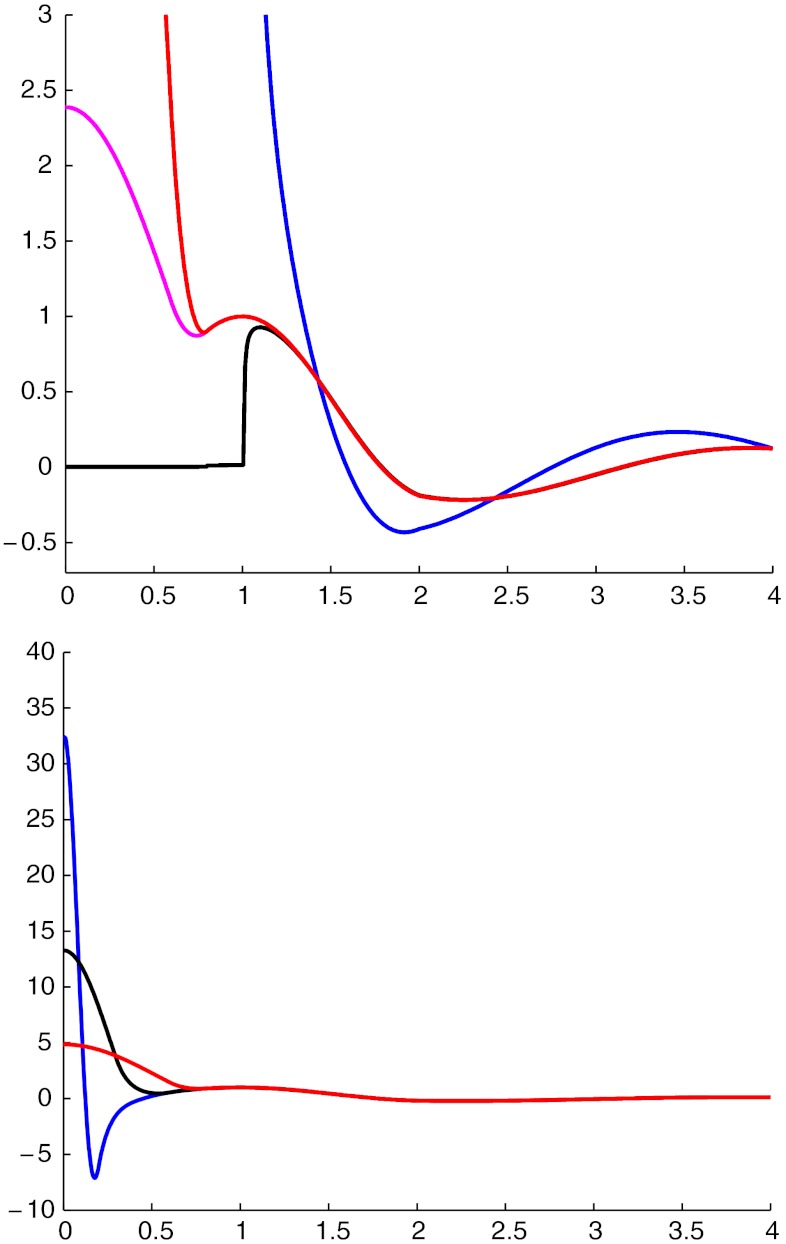Fig. 2.
The cloak–resonance–sensor–Schrödinger hat continuum. Scattering by potentials with different parameters, demonstrating four modes: cloak, resonance, sensor and Schrödinger hat. Graphs show the real parts of  (defined in Thm. 1) for 0 ≤ r ≤ 4; note different vertical scales. Upper: Cloak (black) allows little penetration of incident wave into cloaked region, B1. Resonant curve (blue) shows blowup (to off-chart values, see Fig. S1) within B1, and large near-field deviation from incident wave, indicating failure of cloaking. Sensor (purple) combines cloaking effect with moderate penetration into B1. Schrödinger hat (red) obtains large value within B1, allowing for very sensitive cloaked measurement of incident waves. Note that the cloak, sensor and SH solutions are essentially identical with the incident wave outside of the cloaked region, while the resonant solution diverges, destroying cloaking (18, 19). Lower: Continuous parameter variation from sensor to Schrödinger hat modes. Height of central excitation (quasmon) can be made arbitrarily large, and width of peak made arbitrarily small. For parameters used, see (SI Text).
(defined in Thm. 1) for 0 ≤ r ≤ 4; note different vertical scales. Upper: Cloak (black) allows little penetration of incident wave into cloaked region, B1. Resonant curve (blue) shows blowup (to off-chart values, see Fig. S1) within B1, and large near-field deviation from incident wave, indicating failure of cloaking. Sensor (purple) combines cloaking effect with moderate penetration into B1. Schrödinger hat (red) obtains large value within B1, allowing for very sensitive cloaked measurement of incident waves. Note that the cloak, sensor and SH solutions are essentially identical with the incident wave outside of the cloaked region, while the resonant solution diverges, destroying cloaking (18, 19). Lower: Continuous parameter variation from sensor to Schrödinger hat modes. Height of central excitation (quasmon) can be made arbitrarily large, and width of peak made arbitrarily small. For parameters used, see (SI Text).

